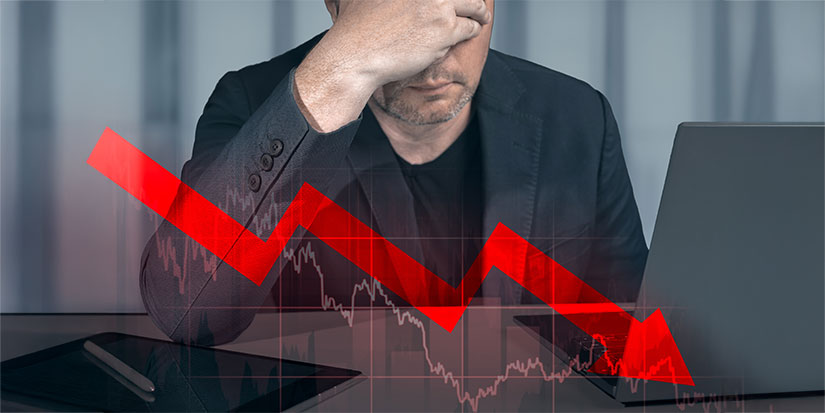
The Importance of Diversification
You may or may not know that during the Great Depression, the stock market went down 89%. If you had a $200,000 portfolio, that leaves you with $22,000. Catastrophic. Not to say that will happen again, but… it might.
I Am Worried About the Stock Market
Now… I am worried about the stock market. When I was in NYC, I was in the office of one of my hedge fund subscribers, and he comes in and says, “Doesn’t it feel as though something really bad is going to happen?
Process and Results
Let me tell you about my investment process: I trade whatever the hell I want to trade whenever I feel like it.
Adult Swim
I famously wrote in a Substack essay that I don’t vote. You can google it if you want; I’m not going to link to it because it has salty language.
How to Lose Money
I remember the first time I really sustained losses in trading. It was 2000, I had an Ameritrade account, and my first few trades went well on the long side, with Philip Morris and Texaco and a few others. I was feeling pretty smart.
In January 2000, I decided to short some dumb internet stocks. That was going fine until the Fed did a surprise rate cut, at which point those trades went up an uncomfortable orifice. I quickly covered the shorts, losing about $1,200. If I had held on, I would have made thousands—those sketchy internet stocks all ended up going out of business. But it is tough to be short when faced with the prospect of unlimited losses.
$1,200 was a lot to me at the time. Between food and gas and other miscellaneous expenditures, I was spending a few hundred bucks a month. It wasn’t catastrophic, but it was enough to make me pause and reflect.
So, what did I do? I got back on the horse and shorted some optical networking stocks, buying some put spreads. I made the money back and then some. I could have crawled in a hole and licked my wounds and never traded again. But I decided to keep fighting…
I usually find a way to turn lemons into lemonade. I am losing money on a trade right now. Here is what I typically do: I reduce risk to the point where I only have a small exposure to the trade. I don’t get completely out of it because if I get out of it, I will take it off my screen, forget about it, and miss the next opportunity. By keeping one unit of the trade on, it forces me to keep an eye on it. Then, at some point in the future, I will try it again. Maybe I won’t make all my money back, but I will make some of it back.
I often find myself in situations where the original thesis was correct but the timing was off. The goal is to stay involved in a limited-risk fashion until the timing is correct. Now, there are some cases where the original thesis was actually wrong, and in those cases, I cut my losses and move on to the next trade. This is very important: There is always another trade. There is always something to do.
They can’t all be winners. There is a quote about diversification: If you don’t have a position in your portfolio that you hate, then you are not diversified. If everything in your portfolio is working, then a piano is about to fall on your head—you are not diversified.
Grace and Dignity
The goal is to lose money with grace and dignity. This means:
-
Don’t make excuses. It’s not the market’s fault; it’s your fault.
-
Don’t talk about your winners and not your losers.
-
Don’t double down on a losing position.
I want to talk about this idea of talking about your winners, not your losers. When I go to a cocktail party and people start talking stocks, the first thing I do is bring up my losing trades—I lost money on x, I lost money on y, etc. I talk about my losing trades in my newsletters. My private equity short idea hasn’t gone well so far, to say the least. I talk about my losing trades all the time.
The way I look at it, when I put on a trade, there are two possible outcomes: I will make money or I will learn something. Both are positive outcomes. The reason I’m as good of an investor today is because of all the losing trades I have had in my career. I’m sure all the great traders feel the same way. You pick a fight with the market and lose enough times, eventually, you learn not to pick a fight with the market. This is called wisdom. I don’t learn anything from my winning trades. Sometimes I make money completely by accident. Sometimes I actually put on the wrong trade in error and make money on that too. There is nothing to be learned from that.
There are times when you’re just not “seeing” the market. We all go through cold spells. Maybe it is time to take a break? Reduce risk and walk away for a while until you get some attractive setups? Your exposure should be high when you have conviction and low when you don’t have conviction. A common mistake people make is to use the same amount of capital all the time—you don’t always have the best ideas.
Take it from the guy who is an expert on losing money. Sometimes you see some doof selling a service online who is talking about all his 10,000% gains. I am much more interested in his 90% losses.

Jared Dillian, MFA
P.S. Quick shout-out. My friend Justin Spittler recently launched his new trading service, Express Trader, and the idea behind it couldn’t be simpler. He uses his favorite indicator to gauge where the market’s headed and then recommends the three strongest stocks to buy each week. Three trades. Once a week. And that’s it. If you’d like access to Justin’s all-new advisory, click here.
|
